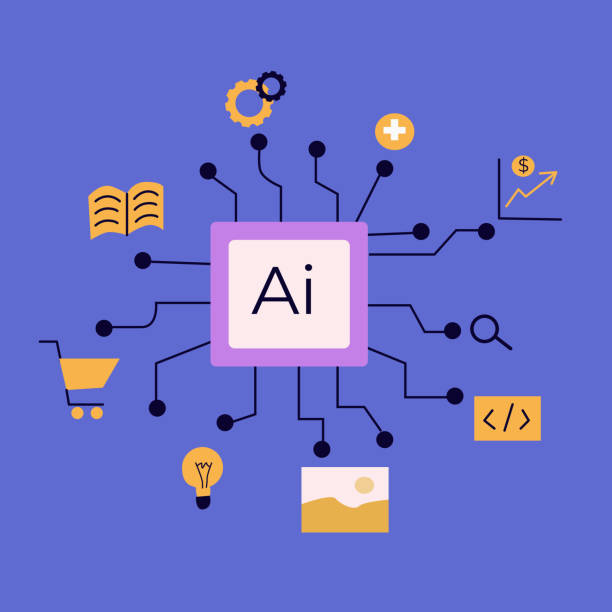The emergence of e-commerce has changed the way customers shop, making a vast range of products available for everyone. However, this also poses the challenge of scrolling through countless options, making customers feel overwhelmed and the search process a tiring task. Similarly, businesses are facing the challenge of increased competition, which makes them look for ways to attract new customers and retain existing ones.
Personalized recommendation is one such solution that businesses use for this purpose. The efficiency and accuracy of these recommendations can be further improved by artificial intelligence. An AI recommendation engine helps in the collection of raw data sets and refining them to provide insights into target customers’ preferences and likes.
AI-powered recommendation platforms can benefit both users and businesses in various ways. They can provide customers with the content of their interest before they search for it, while companies can capitalize on these proactive suggestions to keep customers engaged and convert them.
How AI has Transformed Recommendation Engines
In the past, users were provided with suggestions based on their immediate actions, such as the latest item clicked or the current search query. However, AI has changed the way these recommendation engines work. It enables them to track how people use their site and understand what people really want.
An AI recommendation engine considers keywords, clicks, conversions, and other measurable actions taken by a visitor during their session to generate suggestions that match what they are looking for. This method is driven by machine learning, which continuously evaluates user data and improves suggestions over time. The recommendations’ degree of accuracy and relevancy is significantly higher than what could be provided by outdated methods. AI-powered recommendation systems differ from traditional systems in the following ways:.
- They can spot trends by looking at how users are acting all the time.
- The capacity to examine complex and extensive data collections.
- Connecting consumers with the products or services they’re considering.
- Predicting results by comprehending consumer preferences and purchasing habits.
Working Process of AI Recommendation Engines
The ultimate goal of AI recommendation engines is to guide users toward the content or products they may find relevant and encourage them to convert. The solutions use a standard 4-step process to achieve this goal.
1. Gathering Information
User information forms the base for providing relevant suggestions. AI recommendation engines pull user data from various sources to identify customer preferences. This includes:
- The websites that customers interact with.
- The products they purchased.
- The ratings or reviews they leave.
- The search terms they use.
2. Saving the Data
Once the information is gathered, the next move is to store it in large-scale databases, typically cloud-hosted. This allows the recommendation platforms to organize this data in a structured way. Cloud storage is commonly adopted because of its capacity to scale and adapt.
3. Data Analysis
AI recommendation engines analyze the information they’ve gathered and look for patterns in how customers interact with a brand. They then conclude what kind of content people will like based on this data. This process includes:
- Statistical Methods: Basic analytical tools to spot repeated patterns.
- ML Algorithms: Analyze supervised, unsupervised, and reinforcement data.
- Natural Language Processing (NLP): For written content, NLP helps read tone and context.
4. Filtering for Suggestions
The final step in creating personal recommendations is undergoing a filtering process using insights gained from patterns and providing suggestions that fit people’s preferences. AI recommendation engines use 3 different filtering techniques for this purpose:
- Collaborative Filtering: This approach collects and looks at what people like to do, what preferences they have, and how they behave. Then, provide suggestions based on how similar their behavior is to others.
- Content-Based Filtering: In this method, products are filtered based on a user’s unique behaviors. Algorithms consider user preferences and item features like size, style, genre, or format. This method is effective for retaining customers. They provide customers with products that they searched for earlier or products with similar traits.
- Hybrid Filtering: This method combines the positives of the above two methods. It ends up drawing on the best parts of both approaches and makes suggestions that are more accurate.
Beyond these four steps, AI recommendation engines follow several other approaches to fine-tune personalized suggestions.
- Predictive Modeling
Predictive modeling in artificial intelligence uses machine learning methods to anticipate future user actions by studying earlier interactions. This improves the accuracy of content suggestions. This method involves reviewing a shopper’s past behavior, such as items bought or media viewed, to uncover trends and preferences.
As the system collects more information over time, its predictions become sharper and more precise, keeping suggestions relevant.
- Ongoing Learning and Improvement
AI recommendation engines can continuously learn from the new incoming data and evolve. With new information, the suggestions can be refined in real-time, ensuring customer satisfaction. For instance, if a shopper moves from looking at regular brands to premium brands, the engine quickly picks up on that and starts showing similar options.
- Recommendations Based on Context
To offer smarter results, AI can factor in things like the time, place, or device being used. If someone is browsing leather jackets on a retailer’s app, context-aware platforms can suggest a jacket considering various factors. These include the person’s style, size availability, and seasonal sales. This combination of context and personal data creates a better experience when browsing content.
Bottom Line
AI recommendation engines have become the must-have solution for modern retail businesses. They are important for boosting user involvement, conversion rates, and overall customer experience. In the future, these recommendation engines can become even more precise and may get deeply embedded in everyday routines. AI-driven stylists, augmented/virtual reality, and LLM-powered suggestions can reshape how customers shop.
Irrespective of the industry, whether it can be online retail, streaming services, financial tech, or medical services, using a reliable AI-based recommendation platform can greatly improve how users interact with their brand. Companies that adopt AI recommendation engines gain an edge by increasing customer loyalty and driving higher earnings.



